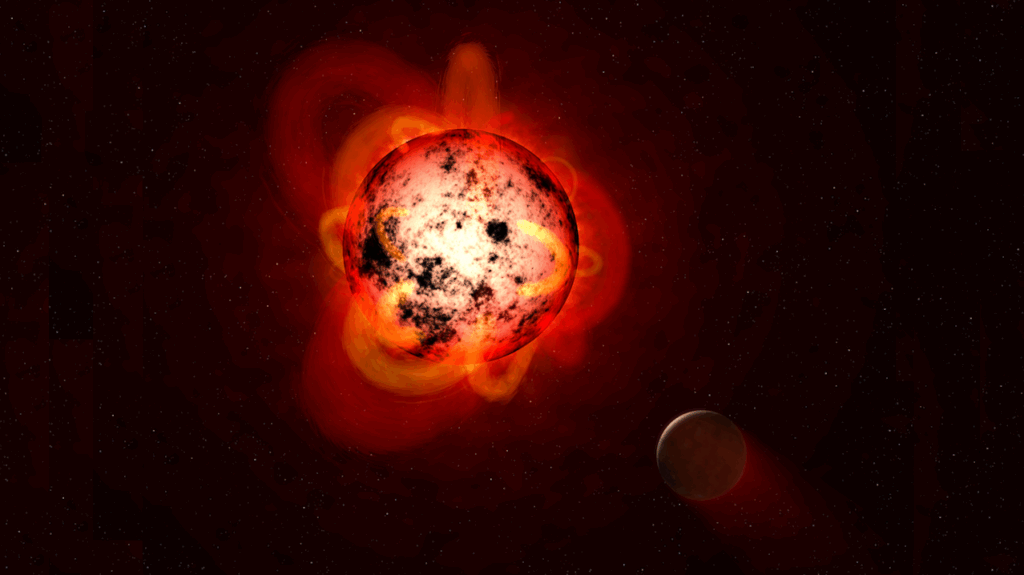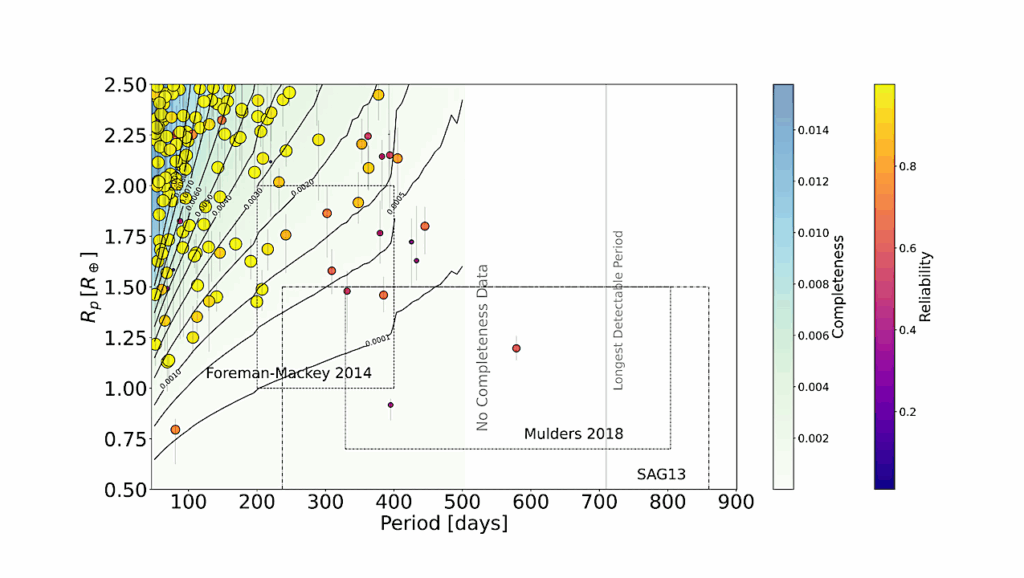TOI-2285b: A 1.7 Earth-radius Planet Near The Habitable Zone Around A Nearby M Dwarf

We report the discovery of TOI-2285b, a sub-Neptune-sized planet transiting a nearby (42 pc) M dwarf with a period of 27.3 days.
We identified the transit signal from the TESS photometric data, which we confirmed with ground-based photometric observations using the multiband imagers MuSCAT2 and MuSCAT3. Combining these data with other follow-up observations including high resolution spectroscopy with TRES, high resolution imaging with SAI 2.5m/SPP, and radial velocity (RV) measurements with Subaru/IRD, we find that the planet has a radius of 1.74 ± 0.08 R⊕, a mass of < 19.5 M⊕ (95% c.l.), and an insolation flux of 1.54 ± 0.14 times that of the Earth.
Although the planet resides just outside the habitable zone for a rocky planet, if the planet harbors an H2O layer under a hydrogen-rich atmosphere, then liquid water could exist on the surface of the H2O layer depending on the planetary mass and water mass fraction. The bright host star in near infrared (Ks=9.0) makes this planet an excellent target for further RV and atmospheric observations to improve our understanding on the composition, formation, and habitability of sub-Neptune-sized planets.
Akihiko Fukui, Tadahiro Kimura, Teruyuki Hirano, Norio Narita, Takanori Kodama, Yasunori Hori, Masahiro Ikoma, Enric Pallé, Felipe Murgas, Hannu Parviainen, Kiyoe Kawauchi, Mayuko Mori, Emma Esparza-Borges, Allyson Bieryla, Jonathan Irwin, Boris S. Safonov, Keivan G. Stassun, Leticia Alvarez-Hernandez, Víctor J. S. Béjar, Núria Casasayas-Barris, Guo Chen, Nicolas Crouzet, Jerome P. de Leon, Keisuke Isogai, Taiki Kagetani, Peter Klagyivik, Judith Korth, Seiya Kurita, Nobuhiko Kusakabe, John Livingston, Rafael Luque, Alberto Madrigal-Aguado, Giuseppe Morello, Taku Nishiumi, Jaume Orell-Miquel, Mahmoudreza Oshagh, Manuel Sánchez-Benavente, Monika Stangret, Yuka Terada, Noriharu Watanabe, Yujie Zou, Motohide Tamura, Takashi Kurokawa, Masayuki Kuzuhara, Jun Nishikawa, Masashi Omiya, Sébastien Vievard, Akitoshi Ueda, David W. Latham, Samuel N. Quinn, Ivan S. Strakhov, Alexandr A. Belinski, Jon M. Jenkins, George R. Ricker, Sara Seager, Roland Vanderspek, Joshua N. Winn, David Charbonneau, David R. Ciardi, Karen A. Collins, John P. Doty, Etienne Bachelet, Daniel Harbeck
Comments: 9 pages, 3 figures, accepted for publication in PASJ
Subjects: Earth and Planetary Astrophysics (astro-ph.EP)
Cite as: arXiv:2110.10215 [astro-ph.EP] (or arXiv:2110.10215v1 [astro-ph.EP] for this version)
Submission history
From: Akihiko Fukui
[v1] Tue, 19 Oct 2021 19:25:37 UTC (1,193 KB)
https://arxiv.org/abs/2110.10215
Astrobiology








